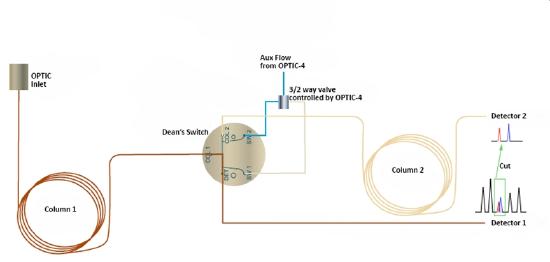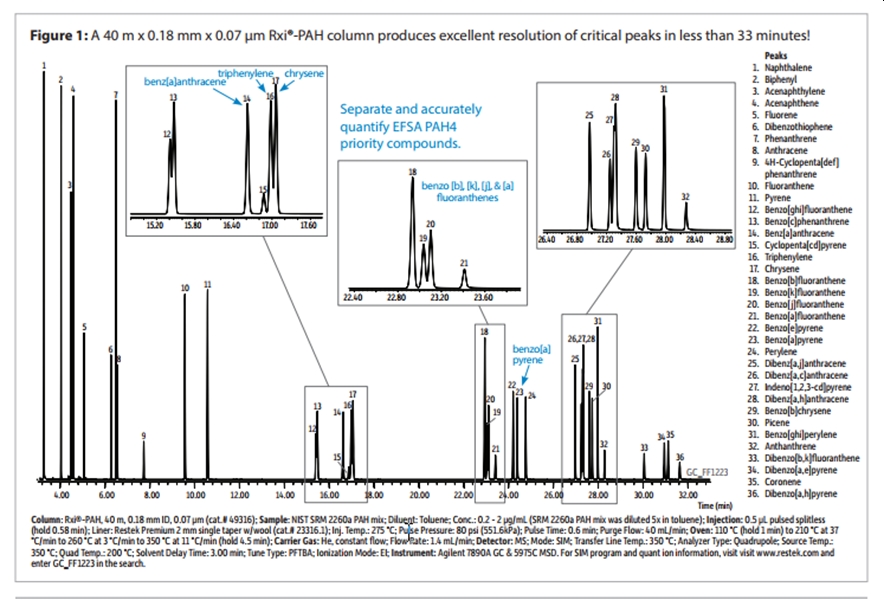13.2: Advances in GC
- Page ID
- 220491
Multidimensional Gas Chromatography (GC-GC, 2D-GC)
Recently the idea of multidimensional gas chromatography separations has be proven to be very useful for closely eluting solutes in experiments with a single column. (see Liu and Phillips, Journal of Chromatographic Science. 29 (6), 227–231, 1991). Multidimensional GC is based upon sending groups of closely eluting solutes (on a long column of one selectivity onto a second shorter column of a different selectivity). As shown in Figure\(\PageIndex{1}\) a fast value is used to the red and blue co-eluting in Column 1 solutes onto Column 2 where are being further separated they are better separated.

Figure\(\PageIndex{1}\) : A schematic diagram of a two dimension GC instrument. Image source currently unknow.
An example of the utility of multidimensional GC is shown in Figure\(\PageIndex{2}\) - Figure\(\PageIndex{4}\). Figure\(\PageIndex{2}\) depicts a typical one dimensional GC separation of a large number of polycyclic aromatic compounds on an appropriate coluum. Despite the 40 m length of the capillary column, there are numerous examples of co-eluting solutes presented in the focus boxes.

Figure\(\PageIndex{2}\) : The gas chromatograph for a large series of polycyclic aromoatic solutes on a 40 M RXi-PAH column. Imge source currently unknown
Figure\(\PageIndex{3}\) reveals the 2D chromatogram when the solutes eluting through the RXi-PAH column arriving between approximately 15 and 24 min in Figure\(\PageIndex{1}\) are directed onto a short, 1 M, RXi-1HT column for separation on a column with a different selectivity. (Note an even longer RXi-PAH column, 60 M, was used in the the 2D GC instrument)

Figure\(\PageIndex{3}\): A focused region in the 2D - GC experiment of the solutes eluting from approximately 15 min to 24 min in Figure 12.2.2. Image source currently unknown.
Figure\(\PageIndex{4}\) is a zoom of the region in Figure 12.2.3 corresponding to the box centered at 16 min in Figure\(\PageIndex{2}\) and containing the signals for benz[a]anthracene, chrysene, triphenylene and cyclopenta[cd]pyrene revealing the full resolution for the separation of these solutes.
 ht
ht
Figure\(\PageIndex{4}\) : A focused region in the 2D - GC experiment revealing the full resolution of the following solutes: benz[a]anthracene, chrysene, triphenylene and cyclopenta[cd]pyrene. Image source currently unknown.

